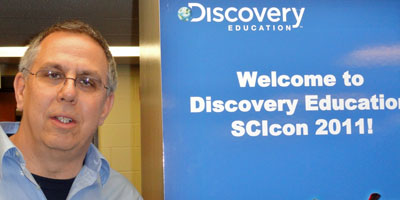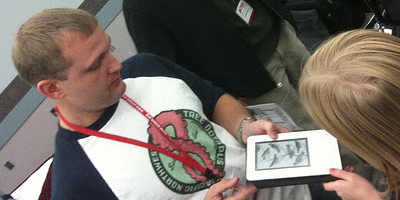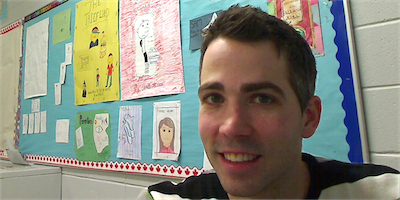Name: Michael Gorman (21st Century Tech Blog, @mjgormans)
Organization: Southwest Allen County Schools
Current title: Professional Development Director of 1 to 1 and Digital Learning
Selected accolades: Indiana Teacher of the Year 2010 Semi-Finalist, Southwest Allen County Schools 2010 Teacher of the Year, Indiana US Air Force 2011 STEM Educator of the Year, Allen County 2011 Excellence In Education Award, Discovery DENny Award 2011
Education is a fantastic place to be! The world of education is being transformed before our eyes, and as educators, we get to take an active role. We will see many changes as classrooms become more student-centered and learning takes on a more active form. Classroom walls will dissolve and the real world will become new place to learn, promoting a new relevance. Through this exciting yet disruptive transformation, the educator will become even more important, providing the essential human element that is so important to the education of a child.
What skill(s) do you feel are most important for today’s students to explore in academic settings (tech or non-tech related)?
Empathy. Technology is one of many tools (though especially important today). But technology cannot replace the human element of teaching.
For a teacher looking to use technology to connect with students, enhance learning or embrace 21st century skills, where do you suggest one begin?
I travel across the country and continually post about ways to infuse 21st century skills and technology into the curriculum. I remind teachers that it is important to look at successful prior lessons and infuse these past successes with technology and 21st century skills.
I often refer to this in my Jukebox to iPod presentation. When looking at this transformation it is obvious that technology made a great idea even better. Teachers must realize that they have a vault of awesome activities that have proven to be successful with students. Many times these perennial gems can be reinvented, mixed, and transformed to bring about a new 21st century lesson that will be even more engaging and applicable to today’s digital learner.
The more I work with teachers, the more I see a need to build a concrete method for updating past lessons. Take a look at Ten Steps to Transforming Past Lessons for 21st Century Learners for more information.
What was your path to your current position?
I actually started in the area of environmental and outdoor education. It seems so similar to today’s technology emphasis on integrating all of the disciplines. Then it was the environment that did the connection… now it is the technology. After environmental education came a start with elementary school…moving to the middle school the last “over 30 years”.
After doing some post grad work at Johns Hopkins I saw a new vision of working with educators. I now facilitate our school district 1-to-1 program and provide professional development on transitioning to a digital learning environment. With this, I have a flexible job that allows me to travel the country consulting in PBL work for BIE (BUCK Institute), digital media for Discovery Education, and digital literacy for Alan November. I am currently also consulting on new educational game and providing some advice to Tech & Learning Magazine and PBS.
Do you have a single lesson plan, curriculum strand, or project that you feel exemplifies effective technology integration – one that you are willing to share with others?
In a recent post entitled, “Engaging Classroom Lessons With Simple One Take Video… Flip Your Classroom…Address Common Core…Incorporate PBL,” I explain how teachers and their students can make a one shot video with no editing, and just one camera. Since it is based on written literacy and 21st century standards it can bring the Common Core into any curricular area.
I created this project to demonstrate that a teacher can facilitate student production of a powerful movie… yet easy to implement. It can be done by somebody with little technology background… yet it can foster growth in student 21st century skill development and the core curriculum.






